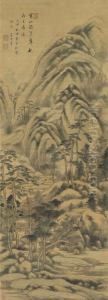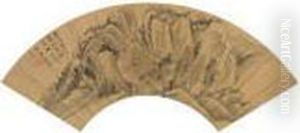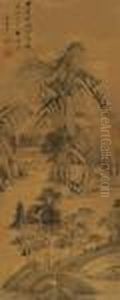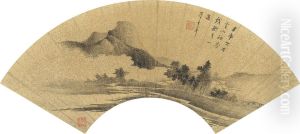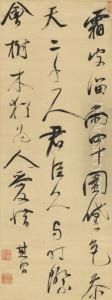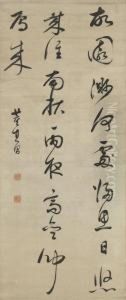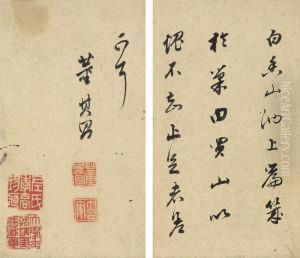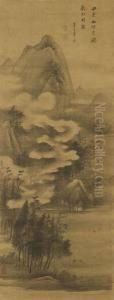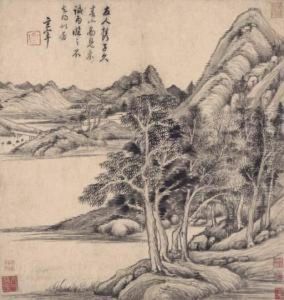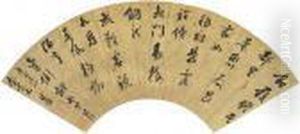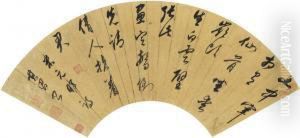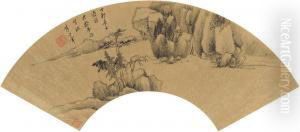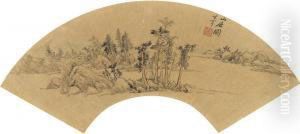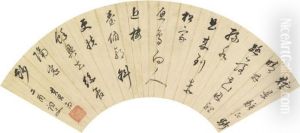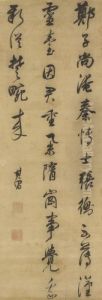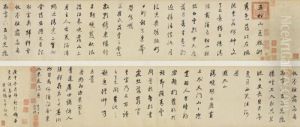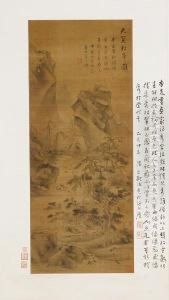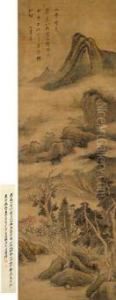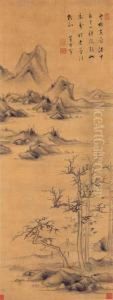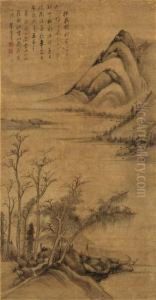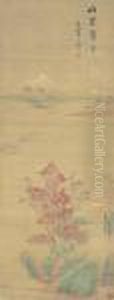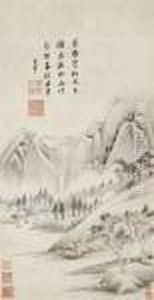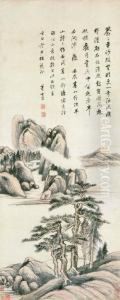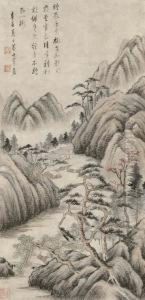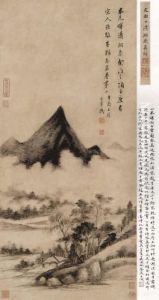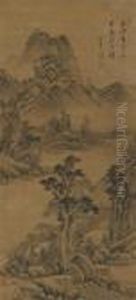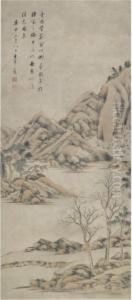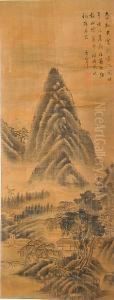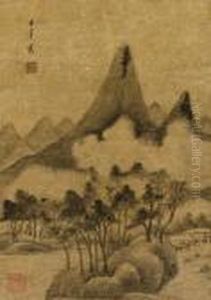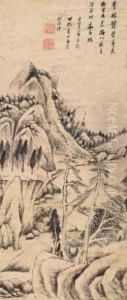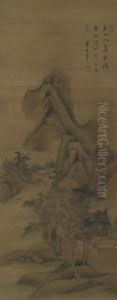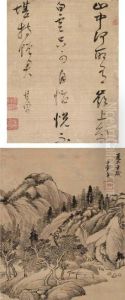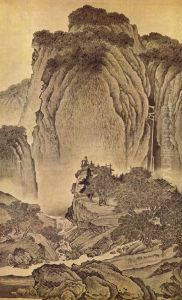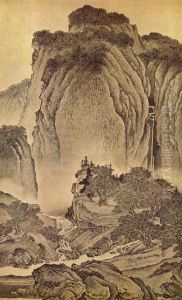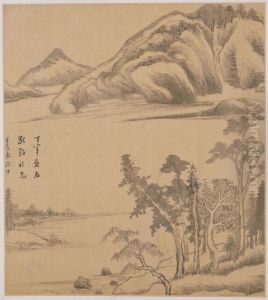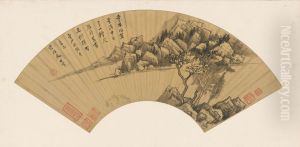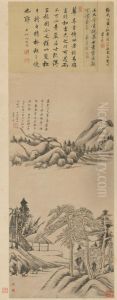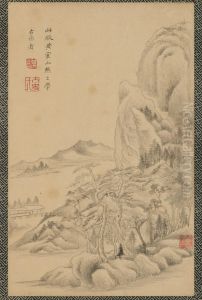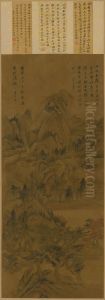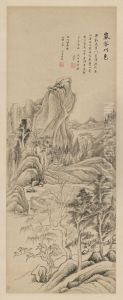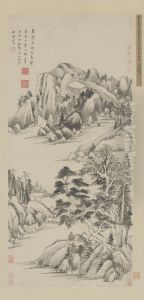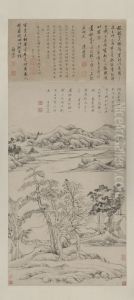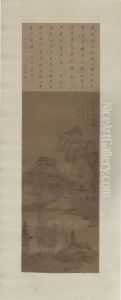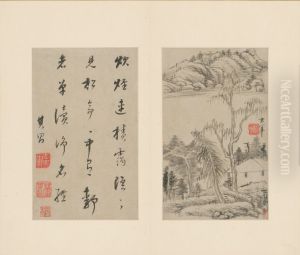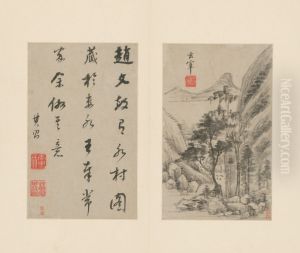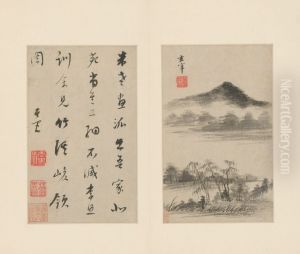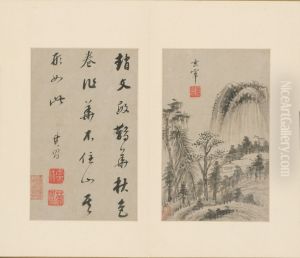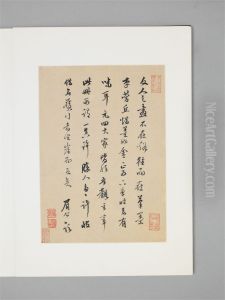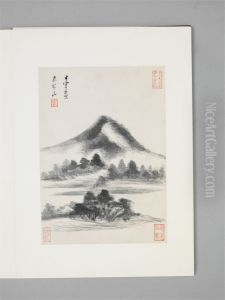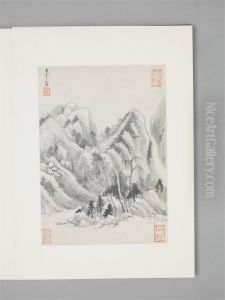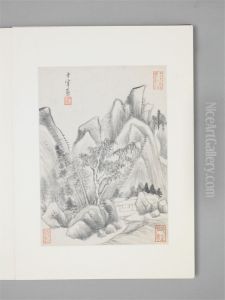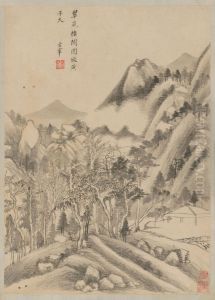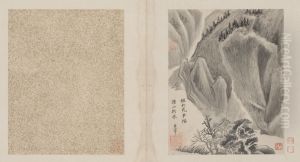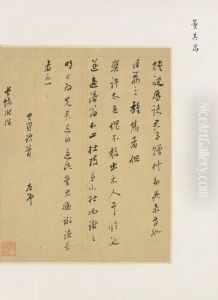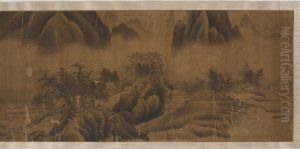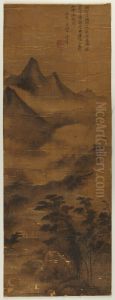Dong Qichang Paintings
Dong Qichang was a prominent Chinese painter, calligrapher, and art theorist of the late Ming Dynasty. He was born in Huating (now Shanghai) to a family with scholarly traditions. Dong Qichang showed a prodigious talent for literature and the arts from an early age, and he passed the imperial examinations to become a government official. However, his official career was intermittent, marked by both successes and setbacks, due in part to the turbulent political climate of the time and his own outspoken nature.
Dong Qichang's contribution to the arts was profound and multifaceted. As a painter, he is known for his landscapes, which often reflect a blend of different historical styles. He was a proponent of the Southern School of Chinese painting, which emphasized the importance of personal expression and the spiritual aspects of art over the formal and technical aspects emphasized by the Northern School.
In addition to his painting, Dong Qichang was an accomplished calligrapher, known for his elegant and powerful style. His calligraphy and paintings were highly sought after during his lifetime and have been revered by generations of artists and collectors since.
Dong Qichang's theories on art were also influential. He advocated for a return to the pure and simple styles of the ancient masters and encouraged artists to study and emulate the works of past dynasties to find their own artistic voice. His theories on the 'Southern' and 'Northern' schools of painting were particularly influential and have continued to affect the discourse on Chinese art history to the present day.
Dong Qichang's legacy is that of a scholar-artist who sought to understand the essence of Chinese art and to convey that understanding both through his own work and his teachings. His influence is seen not only in the art of the Ming and subsequent Qing Dynasty but also in the broader history of Chinese art.
